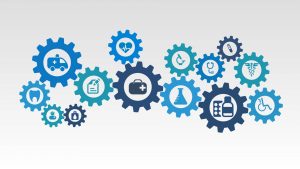As an executive consultant and an advisor to the senior management of various organizations, I have worked with dozens of companies, mostly Fortune 500, around the globe, to guide and support their various forms of business and digital transformation. Subjects of the transformations vary from sales and revenue management transformation, strategic planning transformation, to pricing and business model overhaul. A common denomination that becomes more and more clear among all those endeavors, however, is to better use data and technology in their business practice, be it commercial or operational, to drive greater competitiveness and reach significantly more ambitious goals.
With the buzzwords flying around about analytics, Machine Learning (ML), Artificial Intelligence (AI) and their interactions with business nowadays, basics of a data-driven transformation may not always be clear. This article aims to provide some fundamental knowledge on the subject.
– WHAT does “data-driven transformation” mean
When we say “data-driven transformation”, it refers to any initiative in an organization that involves greater or better use of data, analytics often leveraging new technology introduced.
Data is the source of analysis and modeling that will in turn support downstream business insights extraction or operations automation. Depending on the specific use case for the transformation, data requirements in terms of data variety, volume, granularity and recency etc. will be different.
Given data input provided, traditional analytics (such as descriptive statistical analysis) or advanced algorithms such as AI/ML can be applied to help meet the objective of the use cases, be it customer acquisition prediction, revenue forecast, employee churn prediction, or operations oriented use cases such as use of RPA (Robotic Process Automation) for insurance claim process automation.
In a transformation, digital technologies need to be involved for storing, transforming data and conducting predictive modeling, churning insights or performing operational automation – these are examples of the most basic and common tasks that digital technology can be used for.
What a transformation entails can vary greatly from one scenario to another, depending on the goal of transformation, scope of change, technologies and business partners involved. For a successful transformation, changes in other areas, such as organization structure, culture and worker’ skills and capabilities are often required, in addition to the technical aspects.
– WHY is it widely pursued
Benefits of data-driven decision and transformation have been widely witnessed and proved across domains and industries. The McKinsey Global Institute estimates data and analytics could create value worth between $9.5 trillion and $15.4 trillion a year if embedded at scale1. The benefits can be in both short-term or long-term, manifested in a few different ways:
- Support better decision making that can lead to direct business performance, e.g. using data-driven predictive customer segmentation and targeted marketing to increase customer acquisition, demand growth or other business performance KPIs (Key Performance Indicator)
- Drive greater productivity and operational efficiency, e.g. using RPA for automating insurance claim process, or warehouse inventory management
- Other business benefits such as customer satisfaction, employee retention.
– COMMON PITFALLS
Even though transformation details can vary greatly from one setting to another, there are some commonly seen challenges and pitfalls:
- Data quality and compatibility
This is a most common challenge in conducting a data-driven transformation and easily neglected, however. With the basic nature of the tasks related to storing and managing data, often conducted by the junior level personnel in IT department, this aspect often get under-invested among all the “big” or “shiny” projects in an organization.
With that being said, data is the very input and “fuel” to start any data-driven transformation. “Garbage in garbage out” as we say it – no quality analysis or AI/ML modeling work can be conducted if data quality is not there. In designing the transformation and estimating the outcome, a complete and detailed audit of data condition should be a must-have due-diligence item – that can be conducted as early as in the preparation phase of a transformation. Along the journey of the transformation, having a roadmap to enhance data quality often is a necessary step as well.
- Disparate Data/IT systems and siloed organizational units.
A data-driven transformation can often span across multiple business functions of the organization. Taking demand planning digitization transformation as an example (this is a key business operation in any product company), for this transformation, data required will come from quite a few functions: Customer demand history from supply chain, sales planning data from Sales, new product offering data from R&D to name but a few. These datasets typically reside in different parts of the organization in different IT systems, not necessarily connected and in-synch with each other.
Understanding the nuances of different datasets from different business units, gathering and harmonizing multiple data sources to shape them up to be compatible and connected with each other can be a big undertaking. This aspect is, however, a sufficient condition to starting a cross-functional transformation.
- New technology adoption and integration
Introduction of new technology is most certainly inevitable in a data-driven transformation. With multitudes of barrier factors, from technological, to organizational and human psychological aspects, adopting a new technology into the existing business workflow is never easy in any organization. The new data platform or tool need to be integrated with the existing IT environment; on top of that, adoption of the tool with effective and efficient use of the new technology is needed, but often hard to achieve.
- Focusing on technology without building an overarching business use case
Technology can create revolutionary changes in business operations but itself alone does not generate value. Overall delivery of a transformation outcome will be comprised if sufficient changes of the supporting business infrastructure are lacking – they can be outdated business processes or workers’ capabilities or upstream business operations, and so on. Using business planning digitization transformation for an instance again, successful end-to-end planning requires not only the demand forecast input that is to be made with AI/ML technology, but also a revamped planning business process to fit the role of planners in with a new planning tool; in addition, new skills of the planner, such as evaluating AI/ML and building a human-consensus across functions etc. are also required to complete the whole planning transformation.
Over-indexing on the value of the new technology while neglecting the human intervention and governance and overall business conduct may easily compromise the potential value to deliver or even harm the business.
- New roles, capabilities and organization culture and mindset change are needed
Even when all the technical aspects in a transformation have been taken care of, for a transformation to generate sustained benefit over time, more often than not, new roles, capabilities and organization culture and mindset need to be in place. Changing the organizational culture, e.g. cultivate a more data-driven practice (vs. experience and gut driven), and a mindset to use technology for operational efficacy improvement and innovation and so on.
Writer Bio –
Dr. Z. Maria Wang is a business and digital transformation strategist, a former McKinsey consultant, an expert and educator of AI/ML, an advisor of tech startups, a mother of two and a self-proclaimed humanitarian. Her top interests are in consumer technologies for boosting sustainability and cognitive technology for better strategic decision making.





